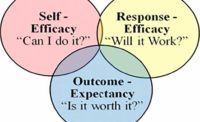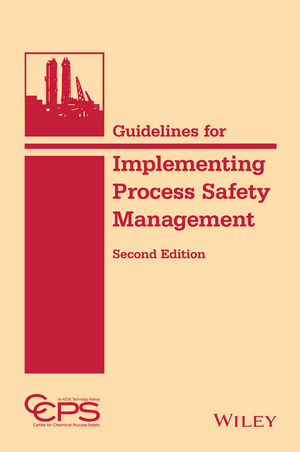1. Feedback can be positive or negative, and can influence the quality and frequency of performance.
2. When you want to motivate the frequency of a particular behavior, try to deliver appropriate feedback immediately after the target behavior.
3. Safe behavior should be followed by positive feedback (or praise) to support that behavior and increase the odds it will occur again.
4. At-risk behavior should be followed immediately with negative feedback to stop the behavior and reduce the chance of recurrence.
5. When you see an unsafe behavior, you should usually do more than just attempt to stop it. Give specific direction for improving the behavior to make it safer.
6. Direction for changing behavior is most influential when it occurs just prior to an opportunity to perform the behavior. So take note of the corrective action needed to make a certain behavior safer, and when an occasion arises for that behavior to occur again, this is the best time to offer instruction.
7. Sometimes at-risk behaviors -incorrect lifting, running down stairs- begin and end too quickly for you to intervene. You might not be able to step in, but the right corrective feedback can help prevent future risks. If a situation calls for a sequence of at-risk behaviors, corrective feedback following one behavior will serve to direct the next behavior.
8. If the opportunity for another at-risk behavior is delayed, feedback is more powerful if given later, preceding an opportunity to be safe or at-risk. Delaying such correction is also less embarrassing for the performer.
9. It’s not necessary for you to tell the person about the prior at-risk observation, just remind him or her to perform the upcoming behavior in a safe manner. Then, statements like "Remember to avoid twisting," "Don’t forget to use the handrail," and "I’m sure you’ll buckle-up and use your turn signal," come across as friendly and caring reminders rather than "gotcha" indictments.
10. Safety feedback needs to focus on specific behavior.
11. Feedback needs to be given with straightforward and objective words. Ambiguous and subjective language that try to judge internal states of mind are not useful, and can be counterproductive. For example, statements like, "It seems you’re careless, lazy, unenthusiastic, unaware, disorganized, or out-of-touch" only add resentment and lessen acceptance of the behavioral message.
12. When you give positive statements watch for the use of "but." Rather than giving pure praise or appreciation, we often feel obligated to add a negative (or corrective feedback) statement to balance the communication. Such mixed messages can weaken your feedback. Some people hear only the positive; some hear only the negative; and others discount both messages.
13. It’s often best to make your specific behavior-focused feedback "short and sweet." Rather than combining both positive and negative feedback in one exchange or overloading a person with several behaviors to continue or change, focus your advice on one area of performance.
14. It’s much better to give people brief and specific feedback messages over weeks or months than to give people fewer but longer feedback sessions with mixed and potentially confusing motivators and directives.
15. Motivational feedback to increase or decrease the frequency of behavior should follow the target behavior as soon as possible. On the other hand, when the purpose of behavioral feedback is to shape the quality of a response, it often makes sense to give such direction as an activator (preceding the next opportunity to perform the target behavior).
Remember, the ABC model of behavior change reflects the basic principle that behavior (B) is directed by activators (A) and motivated by consequences (C). Activators precede our actions and are most apt to influence the quality of our performance (how we do things); consequences usually influence the quantity of our performance (how often we do things).
16. Receiving feedback about errors (a consequence) can be perceived as punishing and frustrating if an opportunity to correct the observed errors is not available in the near future. When the person eventually receives an opportunity to correct the behavior, the advice might be forgotten. By giving corrective feedback as close as possible to the next opportunity for the behavior to reoccur, you increase its directive influence and reduce the potential negative effect of catching a person making a mistake.
17. Feedback should fit the situation. Specific and well-timed feedback must be appropriate for the needs, abilities, and expectations of the person on the receiving end. It should be expressed in language the performer can understand and appreciate, and it should be customized for the performer’s abilities at the particular task.
When people are learning a task, directive feedback needs to be detailed and perhaps accompanied with a behavioral demonstration. In such learning situations, it’s important to match the advice with the performer’s achievement level. Don’t give more advice than the individual can grasp in one feedback session.
Often at-risk behavior is performed by experienced workers who know how to do the job safely, but they have developed poor habits or are just taking a risky short-cut. It could be insulting and demeaning to give these individuals detailed instructions about the safe way to complete their job. In these situations, it’s appropriate to give brief corrective feedback as a reminder to be safe and set the right example for others.
18. Giving good feedback requires up-to-date knowledge of the performer’s abilities regarding a certain task. It also requires specific knowledge about the safe and at-risk ways of performing the task. This is a prime reason why the most effective safety coaching usually occurs between co-workers on the same work team.
19. Feedback will be ineffective if it’s viewed as a way of exerting top-down control, or demonstrating superior knowledge or motivation. The only reason for giving safety feedback is to reduce personal injury.
20. The "gotcha" perspective associated with safety often interferes with a manager’s sincere attempt to correct at-risk behavior. Corrective feedback is often perceived as most genuine or "real" when it occurs between co-workers on the same work team. These individuals know most about the situation and the person, and thus have sufficient information and opportunity to give the best feedback.
These guidelines can be summarized by the word "SOAR." Effective feedback delivery must be Specific, On time, Appropriate, and Real. This is how you can "soar" to success using interpersonal feedback.
I think it’s important for me to reiterate that there is special value in co-workers giving each other safety feedback. Co-workers’ comments are less likely to come across as a "gotcha" indictment of performance, and more in the spirit of the "brother’s/sister’s keeper" idea. Plus, fellow employees are more likely to be present when immediate feedback is necessary. And they can best shape a message -probably without even giving it much thought- to the expectations, abilities, and experience level of the recipient. Finally, encouragement or especially corrections from a co-worker are more apt to be taken as a sign of true caring.





